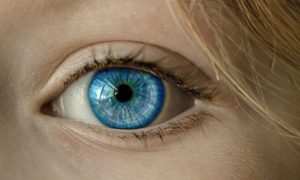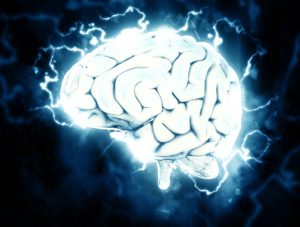Allergy Testing Experience [Show Notes]

Allergy Basics
Anaphylaxis = an out of control allergic reaction that can be life-threatening if medical treatment is not sought immediately
EpiPens are a first-step self-treatment in the case of a major allergic reaction or anaphylaxis.
My Allergy Testing Experience
I got 33 injections!!
Allergy testing started with a serum test as a baseline – just to see how strongly my histamine reaction was.
The injections are sub-dermal (under the dermis layer of the skin). It’s the same level if injection that a TB skin test is done (to see if you’ve been exposed to tuberculosis).
The next step was a prick-test or scratch test – these plastic claw things that poke down in my forearms. This test required me to sit completely still for 20 minutes. COMPLETE TORTURE!
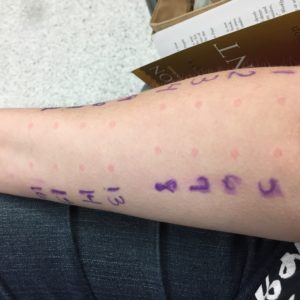


Numbers 1-20 are plants (trees, grasses, flowers). C = cat. D = dog (Good news – I’m not allergic to dogs!) M = skin mites (don’t think about this one too hard). CL = cockroaches. The other letters are household and common molds.
The skin pricks on my forearm was a preliminary test to determine how much serum she was going to inject of each in my upper arms. The mites injection hurt the worse of all of them, but i had minimal reaction.
Slowest tattoo EVAR!
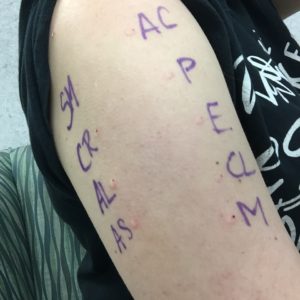
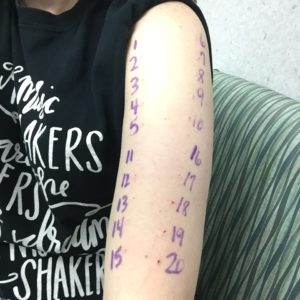
My Results
One of my higher reactions was to Fescue (this is the type of grass that Ken grows on the farm as hay to feed the cows!)
The one the nurse was most concerned about was Cocklebur.
They didn’t want me to wash the mold markings off until I go in for a delayed reading a few days later.
The next step that they prefer you do is allergy shots – 2 years of weekly injections of what you’re allergic to in hopes to desensitize you to those triggers. NOPE! Not doing it!
Connect with me
Support us on Patreon
*NEW* Join the Pharmacist Answers Podcast Community on Facebook
Subscribe: iTunes, Stitcher, GooglePlay, TuneIn Radio
Music Credits: “Radio Martini” Kevin MacLeod (incompetech.com) Licensed under Creative Commons: By Attribution 3.0 http://creativecommons.org/licenses/by/3.0/



